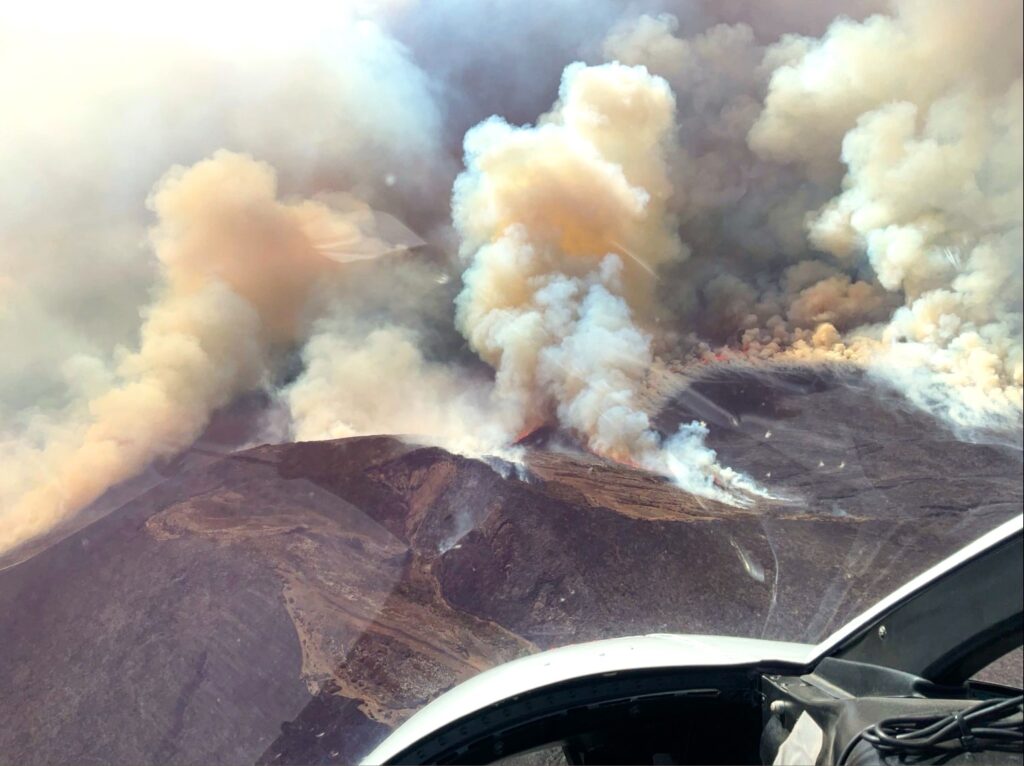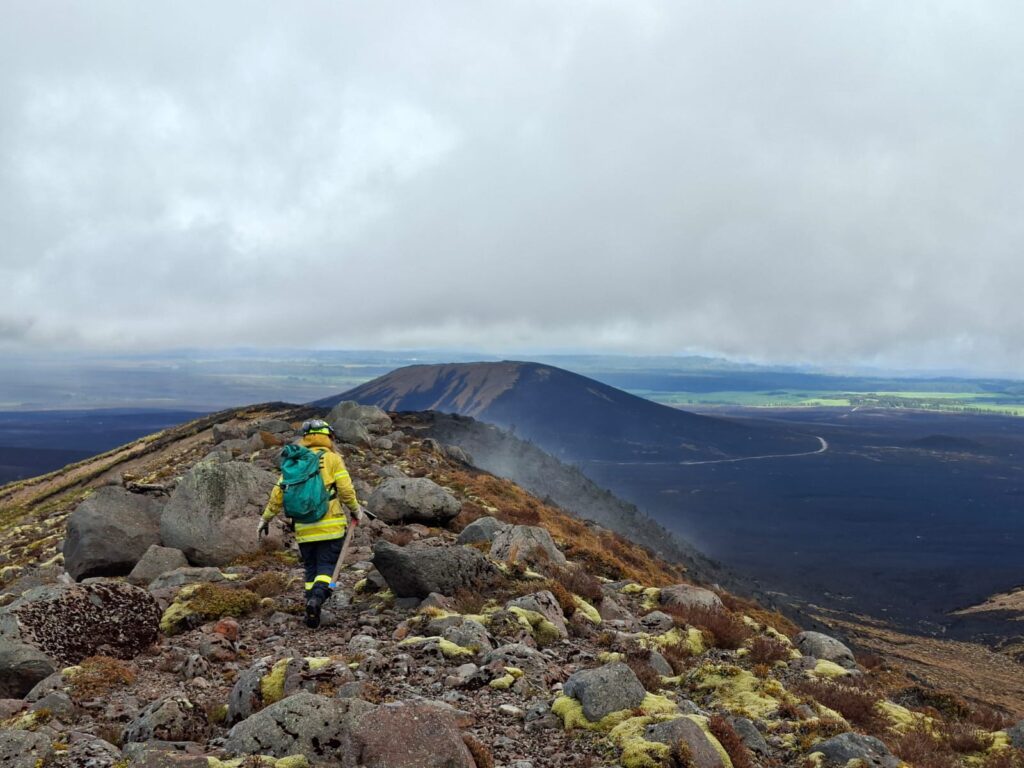
By Moana Ellis, Local Democracy Reporting
Emergency Management Minister Mark Mitchell says the Government’s National Emergency Management Agency (NEMA) is working with central government agencies and the national recovery coordination group to pinpoint where recovery investment is needed following the devastating Tongariro National Park wildfire.
“We’ll try to get that done as quickly as we can so that we can get things moving,” Mitchell told a meeting of the Waimarino (National Park Village) community on Monday night.
The massive blaze tore through 3000 hectares of New Zealand’s oldest national park last week, burning out of control for nearly three days across the Central Plateau.
Monday night’s meeting gathered Ministers, Fire and Emergency NZ, Civil Defence, DOC and local and regional council leaders to brief the community on response and recovery efforts.
Conservation Minister Tama Potaka acknowledged the “hits and shocks” the region had endured in recent years, from ski industry turbulence and mill shutdowns to the closure of the Chateau Tongariro.
He said regeneration opportunities could include cycle trails, a potential solution for the Chateau, and new housing developments, including social housing projects led by local iwi Ngāti Rangi.
Potaka said he would work to ensure new hapū initiative Maunga Ora was an “all-of-iwi, government, community effort to restore the place and continue to amplify Ruapehu as a place of iconic and majestic status”. DOC would also speak with the Tourism Minister about possible funding.
“It might be funded out of existing funding or it might be out of funding we find at the back of the sofa. The key is that we’ve got to have a plan before we figure out how much money is needed.
“That plan should not take six months to figure out – it should be weeks, not months. That’s the direction that I’ve given to the team this afternoon.”

Ngāti Hikairo ki Tongariro said on Monday it would lead the long-term restoration phase alongside DOC and key agencies.
“The mamae for our maunga runs deep,” Hikairo rangatira Te Ngaehe Wanikau said. “The true restoration of Tongariro will take time, unity and aroha.”
The carved pou whenua Te Ririo, which stands at the start of the Tongariro Alpine Crossing, had been charred to its core and was still smouldering on Monday.
Wanikau said the four-metre pou had survived as a symbol of resilience and hope. Installed a year ago to acknowledge the cultural significance of the landscape and protect hikers, it will be strengthened at its core and base following the fire damage to ensure stability.
The hapū said Maunga Ora – a shared commitment to healing, regeneration and the future wellbeing of Tongariro – would be developed in partnership with DOC, FENZ, iwi and the people of Aotearoa.
“We will help the land heal,” Wanikau said.
Ruapehu mayor Weston Kirton said the wildfire had left deep physical and emotional scars.
“I want to acknowledge the shock, fatigue, frustration and the uncertainty,” Kirton told residents.
“I want to express my deepest thanks to FENZ, DOC, NEMA and our Police, iwi partners, volunteers, local businesses and our own council staff. Your efforts protected lives, protected key assets and allowed us to start our recovery journey as quickly as possible.
“Despite that incredible work, the damage is significant. Our whenua has been hurt and so have the communities who rely on it, love it and draw identity from it.”

Kirton said the disaster had created space for renewal. Immediate priorities included building strong partnerships, supporting community wellbeing, sustaining tourism and managing environmental impacts.
“Long-term recovery will build on this and it must be guided by a model that ensures all voices are heard and reflected in a comprehensive recovery plan.”
Horizons Regional Council chair Nikki Riley said the council would back the region’s recovery efforts.
“We would be willing and enabling partners and you will have our full support.”
Conservation leaders said Tongariro Alpine Crossing bookings were “back to normal” and the department was preparing for potentially increased visitor interest.
“We could have a different phenomenon where people come not just to walk the Alpine Crossing but to experience the fire zone. We’re going to have to be agile and keep working with tourism operators to manage this,” DOC Central North Island operations director Damian Coutts said.
“There’s a real concern emerging about people walking off-track, where the ecology will be fragile.”
Awa FM – Te Reo Irirangi o Whanganui
For more of our people, our stories, our way, click News or follow us on Facebook.
